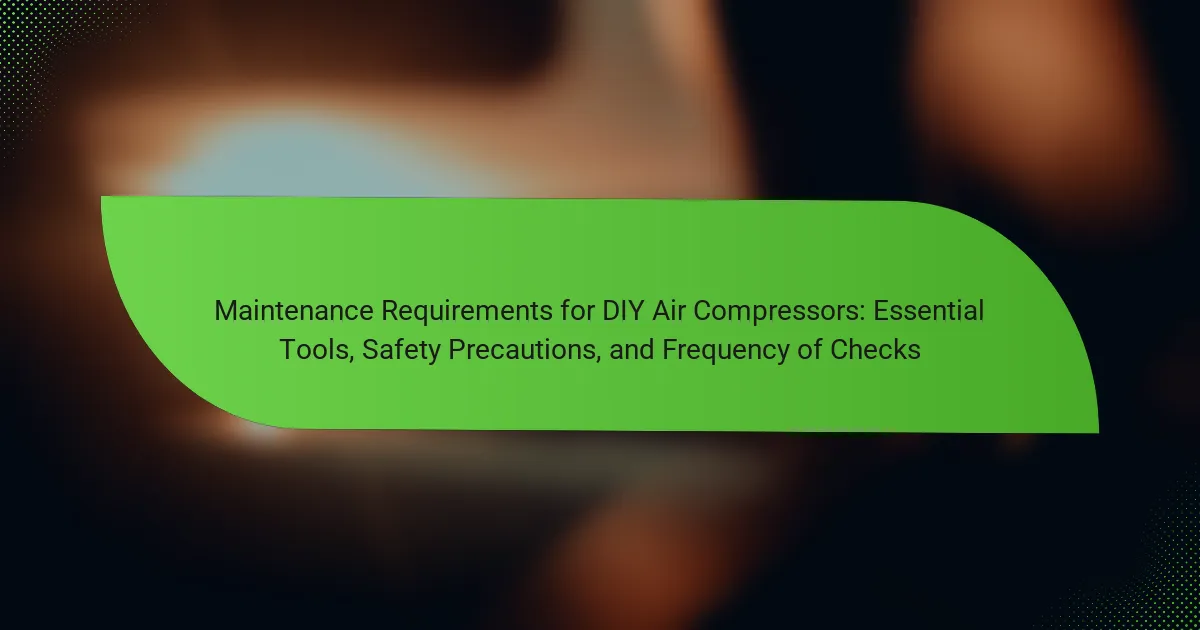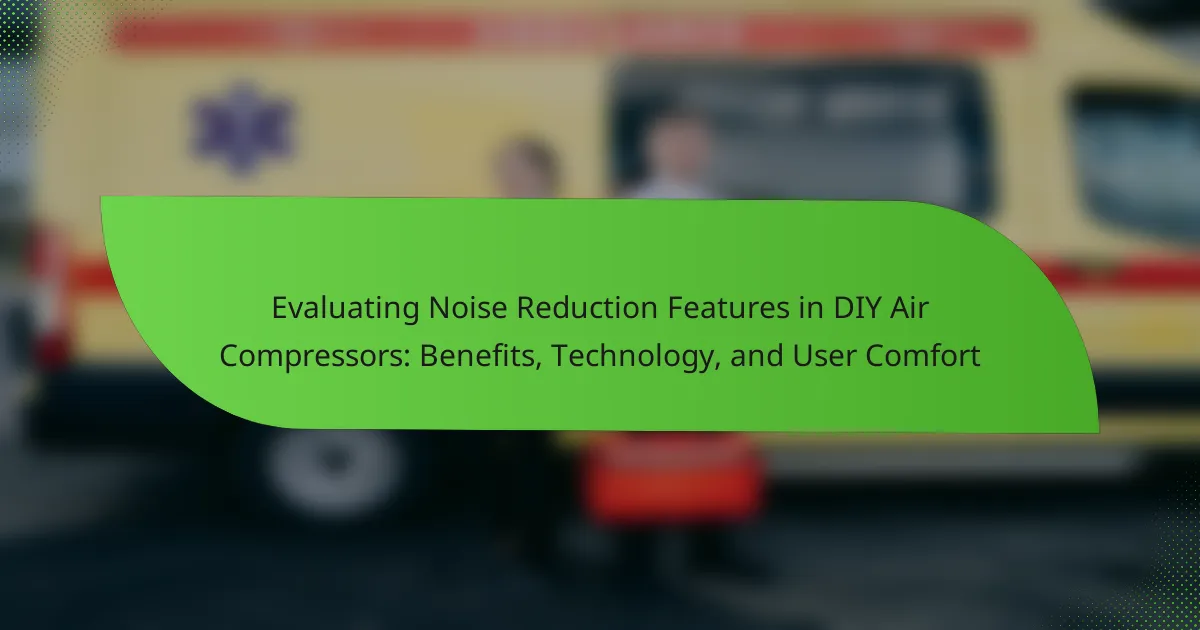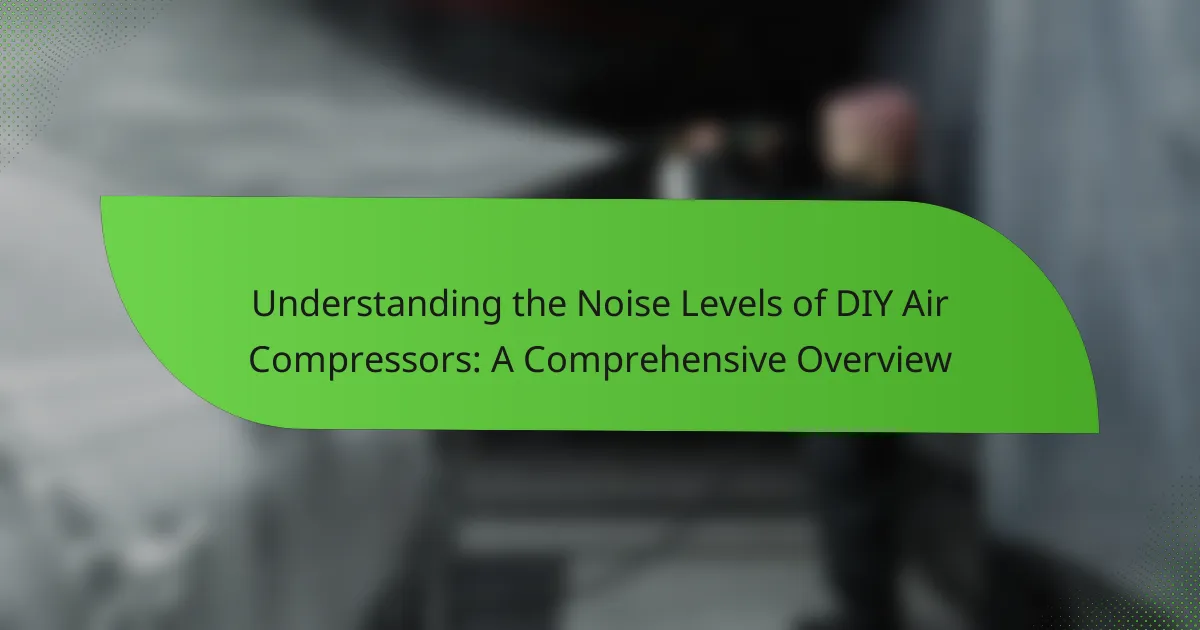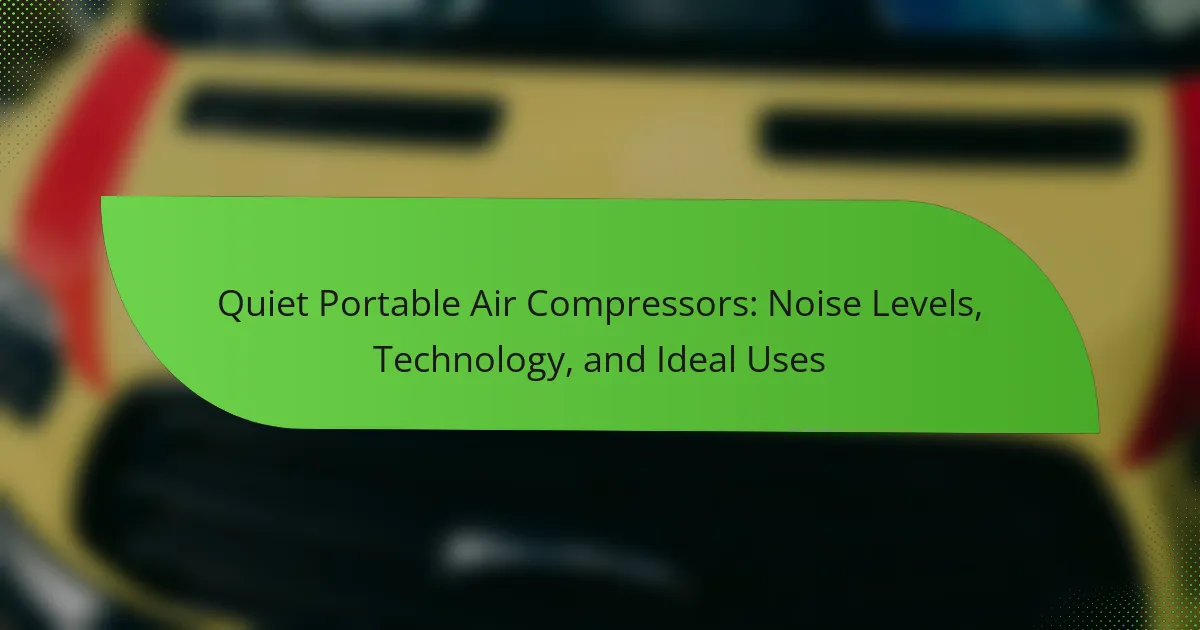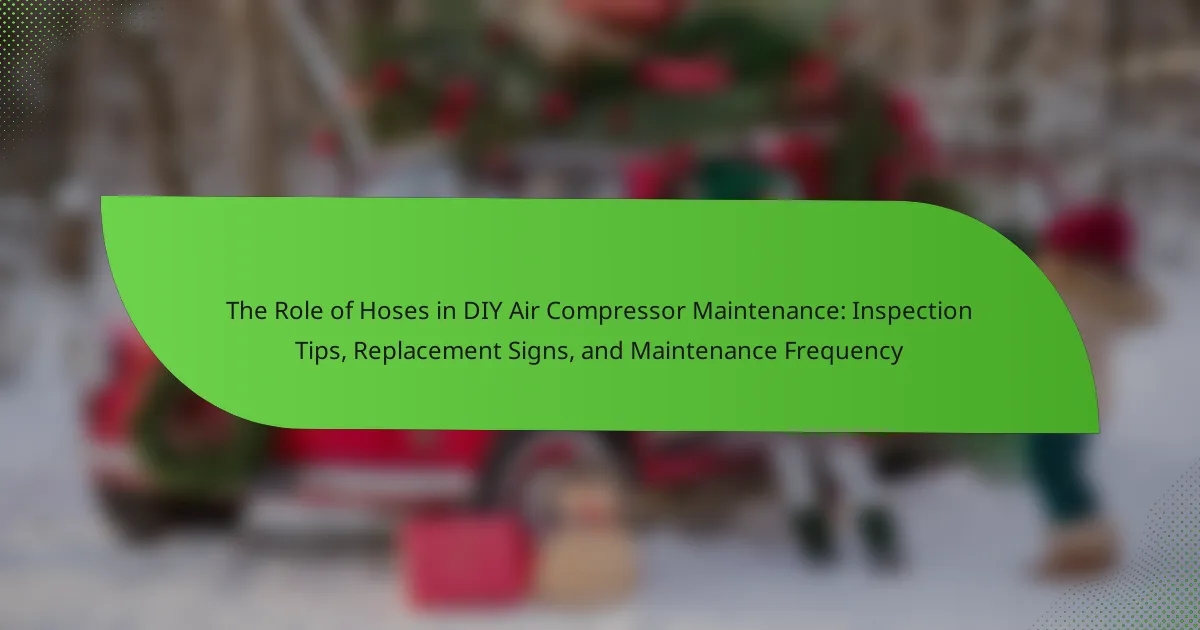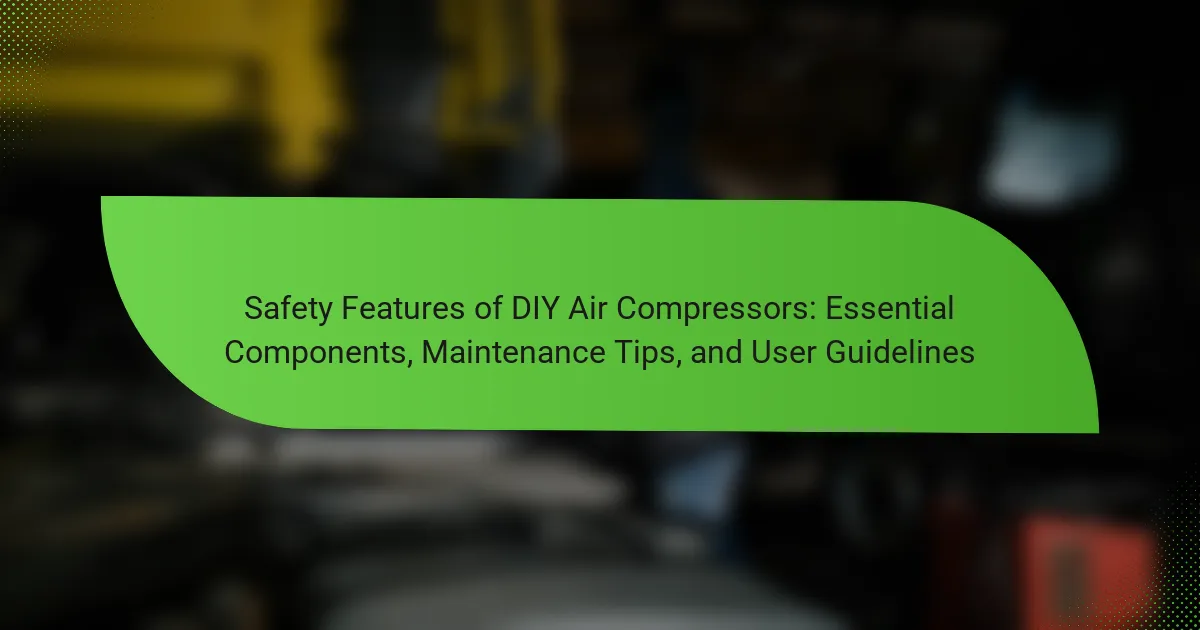
DIY Air Compressors: Step-by-Step Guide to Building Your Own
DIY air compressors are homemade devices designed to compress air for various applications, including inflating tires, powering pneumatic tools, and spray painting. This article provides a step-by-step guide on building a DIY air compressor using accessible materials such as motors, tanks, and piping. Key topics include the necessary components for assembly, safety precautions during construction…
